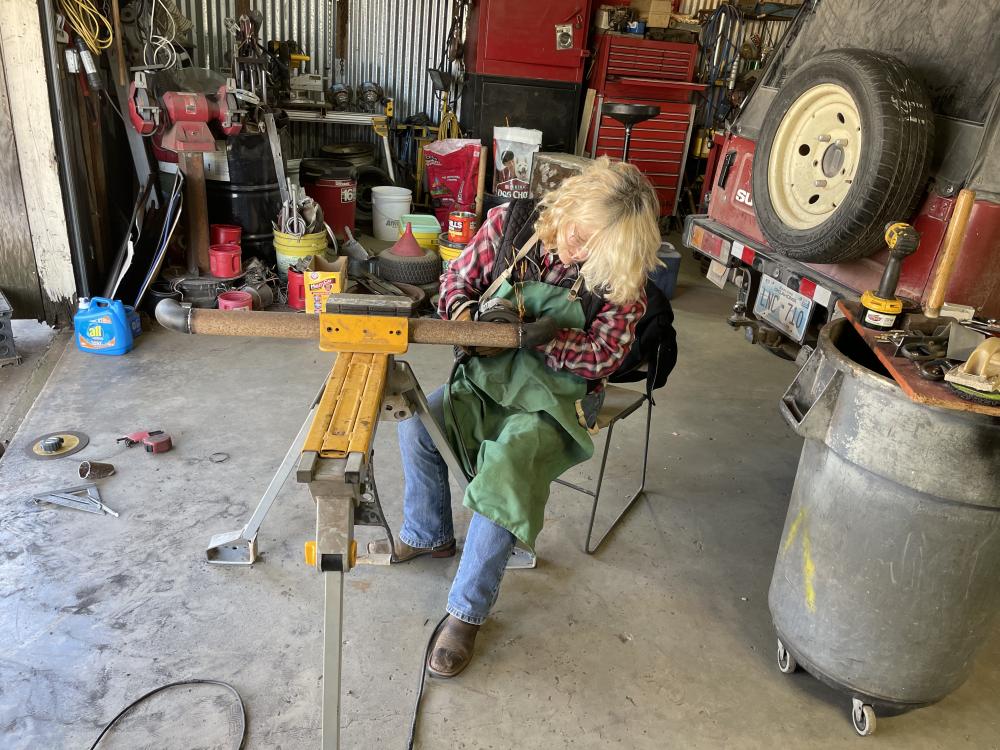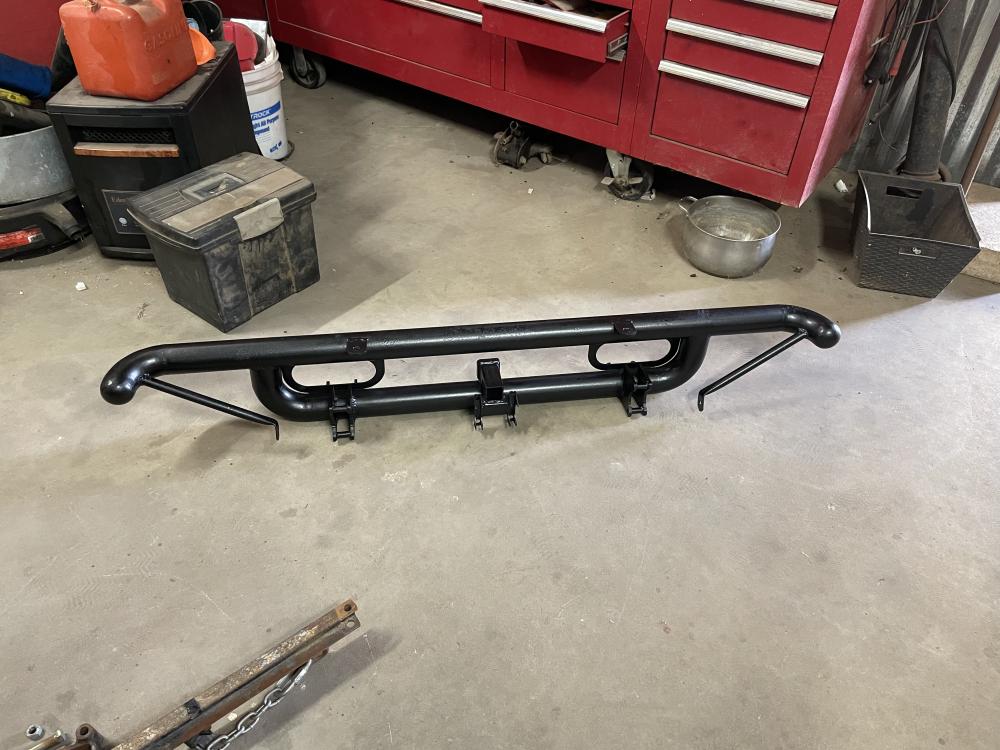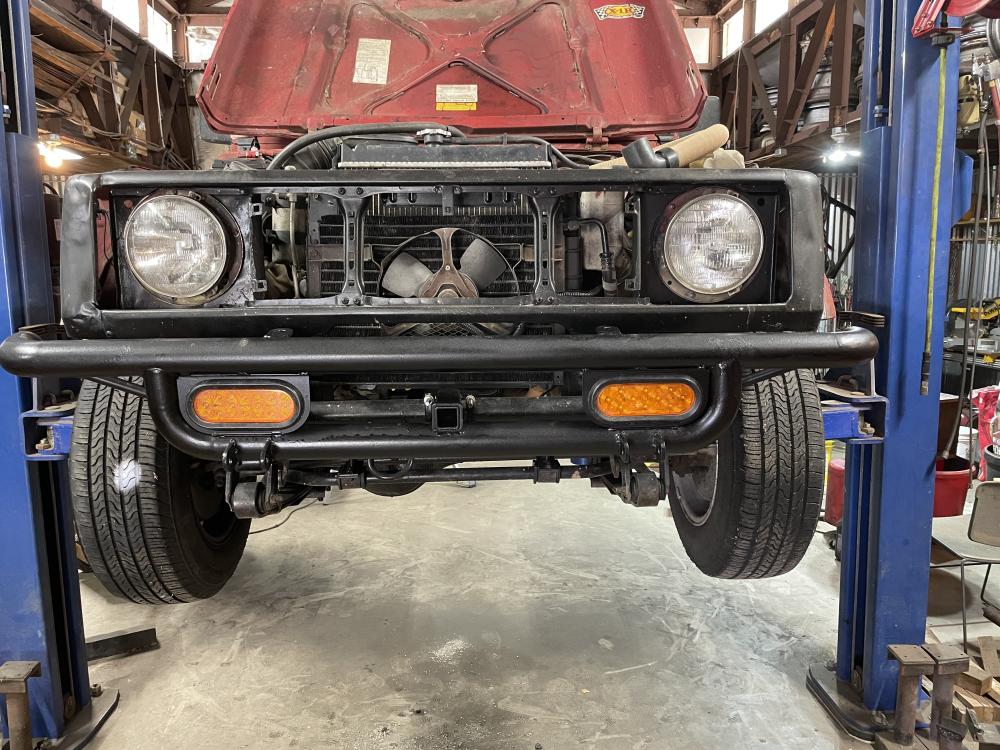-
Posts
9,374 -
Joined
-
Last visited
Content Type
Profiles
Forums
Articles
Gallery
Downloads
Events
Everything posted by Charles R. Stevens
-

Introduction and First Thread (a question)
Charles R. Stevens replied to Rank Badjin's topic in Solid Fuel Forges
-
We have an Eastern European smith who has a portable rig he hikes with, forging as he travels. we have had other apartment dwellers who forged in parks and other public or private spaces as allowed buy the owners. We have even had college students convert abandoned grills and forge out of them. as to power tools, knives can be made with hand tools, files, hack saws, sand paper, sharpening stones, etc. some times if we ask “ how can I” instead of “ why I can’t” knives are small for the most part and can be forged with a “Coffee can forge” as to salvaged stock. Old files, old saws, chainsaw bars, lawnmower blades, planner blades ( already half way to making a draw knife) etc work as flat stock. automotive springs can be worked with buy placing it in a barbecue/ charcoal grill and building a wood or charcoal fire and just letting it aneal the spring. Then it can be cut with a good hacksaw blade. Now 1/2 a coil will fit in a coffee can forge or a small solid fuel forge (add a steady slow air blast to said charcoal grill) and you can straitened out the spring over a small anvil. From there the “knife making 101” thread will help you convert it the a knife blank. of corse let’s not forget the options of university and trade school shops, maker spaces, or smiths that may have space you can use. heck, Viking era reactors may be another source. Everyone likes it when re-enacting show up in the park…
-
You can build a forge either solid fuel or gas affordably, an anvil and other tools can be improvised, your ancestors forged swords on anvils that weren’t much bigger than a sledge hammer head. breaking down springs and other stock isn’t impossible with a forge and some basic tools. there are plenty of Stingy people here who are more than happy to help you out. even easy low cost shelters to keep the worst of a Norwegian winter off you are in our wheel house. so let’s start with the basics, we need a forge, anvil, hammer and tongs. for the fist let’s start with available fuels. Coal, coke, charcoal and propane. What is available to you and what is your preference? What limitations dose your living situation impose on your forge?
-
You might consider starting from the ground up, introduce them to the idea of simple side blast forges and improvised anvils that can be set up where it is covered by the BSA liability policy. As JHCC points out you need to get approved and certified buy BSA but that may be the best bet. “Be prepared” fits th idea of teaching them about the JABOD, improvised anvil and the sourcing and manufacturing of their basic tools. For a very small outlay in cash, scrounging and sweat equity they will be able to creat their own forges at home to actually practice their blacksmithing skills. This might even stretch your thinking if you have a well equipped shop. A Y1K forge is low cost and portable. Just some of the skills they can develop are wood and leather working as well as cooperation if they build simple bellows (6 board feet of lumber for the pair and a leather hand bag or skinned leather couch cushion). might not be what they or their scout master imagined but probably the most fitting.
-
Just goes to prove that we don’t bounce like we did when we were younger.
-
Very nice europien style hunting knife!
-
It may not be a razor but after realizing that the first 18 years of parenthood was the easy part I should have financed a lamborgieni. Much less expensive, less trouble and bigger return on one’s investment. Well unless I parted them out on the Chinese black market…
-
Soil type is a big factor, around here I weld a 15 or 16” rim to the bottom. The side panels will help prevent the posts from leaning in. Some times you have to resort to tall posts and a cross tie
- 13 replies
-
it’s less about the shaft cocking in the hole as it about the bent neck flexing and causing the shaft to wedge between the hole and the foot holding down the work. A 90deg crook needs a curve in the arm to provide this wile a 45-60 degree crook (this is not a tire bend but a generous bend) simply needs the foot to angle slightly toe down so the crook has to spring open (or the curve) to lay the foot down flat on the work.
-
That my friend is much more than a pizza cutter. That is a kitchen axe. Axes can be used to skin and process game as well as vegtibles, much like an ulu
-
White still makes lineman’s boots (The gold standard among the line men I grew up around) as well as their hotshot (wild land fire fighter) boots. They also rebuild all their boots, send them in and they send you back a quote.
-
I am a fan of White’s packers (they have very high arches but generally wheare a good quality cowboy with a riding heal. I have seen disasters with horses and steel toed boots (a mare with an additude can stomp a steel toe down around your toes) the smothish soaps and the ability to slip them off makes the Missus happy (well I think if I undressed and showers outside she would be happier…)
-
Yep, Neat’s Foot oil (was a brand name back in the day, the only one using beef shins and thus the only one that wine the US military contracts) which is the clear, thin fraction of tallow. I also use olive oil, which is what the Smithsonian uses on its leather goods. I also use snow seal on leather and cotton fabrics (tarps and wet wether gear) that I want to make water resistant. oils get into the leather and lubricate the fibers, making them softer and resistant to drying out and cracking. Glycerin is useful in restoring dryer out leather as it is hydroscopic. Not only will it attract moisture it will also fallow moisture into the leather. land products like Snow Proof and boot way generally seal the surface shedding water. as I had enough of polishing boots in the service myself, so I get oil finished boots and give them a fresh coat of oil fallowed buy a coat of snow proof (gets wet in Oklahoma, but back in AZ it was a good cleaning with saddle soap (glycerin) and oil. My old combat boot days started with a cleaning and light oiling with black polish and generally a soft brush shine. As I was not the best troop I wasn’t above just blackening them and carrying the uniform standing orders. My favorite was one NCO who said “you have a writhed problem Stevens!” To which I responded “I don’t have an attitude problem Sergeant , I have a bad attitude!” That ended about as one would expect, lol
-
Small rowels vs large rowels silver dollar sized rowels exert less pressure on the horse than the small Nickle sized ones. And thus are more humane to use. Folks are under the false impression that the opposition is true. In use one actual touches the horse and rolls them against them, gigging will cut the hair and is reserved as the last escalation. this is horsemanship, not HollyWood, a large rowel and a pair of jingle bobs with large spur leathers says horseman. remember a cow boy only has to be smarter than a cow (most aren’t) now mule skinners are a whole diced t beast! Oh and a round toe slip off boot with riding heaps and a generous spur shelf! It’s a price of PPE. sorry, grumpy old farrier who is usually the best horseman a horse gets to see.
-
I use jingle bobs and large brass rowells on my spurs. The jingle bobs look more like the clacker from a bell than a bell. I tend to shake my foot as a warning to the horse that is ignoring leg pressure befor tickling them with the spur. A tap of the crop, rein or get down string on the leather of the stirrup or saddle skirt is fallowed buy a gig with the spur if they still don’t listen. Took me a couple of years to get confident with my feet and seat that I felt I wouldn’t tie them buy accident.
-

Blacksmithing gems and pearls
Charles R. Stevens replied to Glenn's topic in Blacksmithing, General Discussion
that reminds me of the traditional wool carpet Weever’s philosophy of insuring each rug has one flaw, as “God is the only one perfect”. Sometimes it’s the flaws in a person and their works that lend character (not that we are lacking in characters here). -
They have changed the liner material, and as I haven’t looked at a new one I don’t know if they have made any other changes, such as replacing the 1/4” weld studs with larger ones for holding the burner.
-
One hopes, lol. Now to put wheels on the shop anvil…






